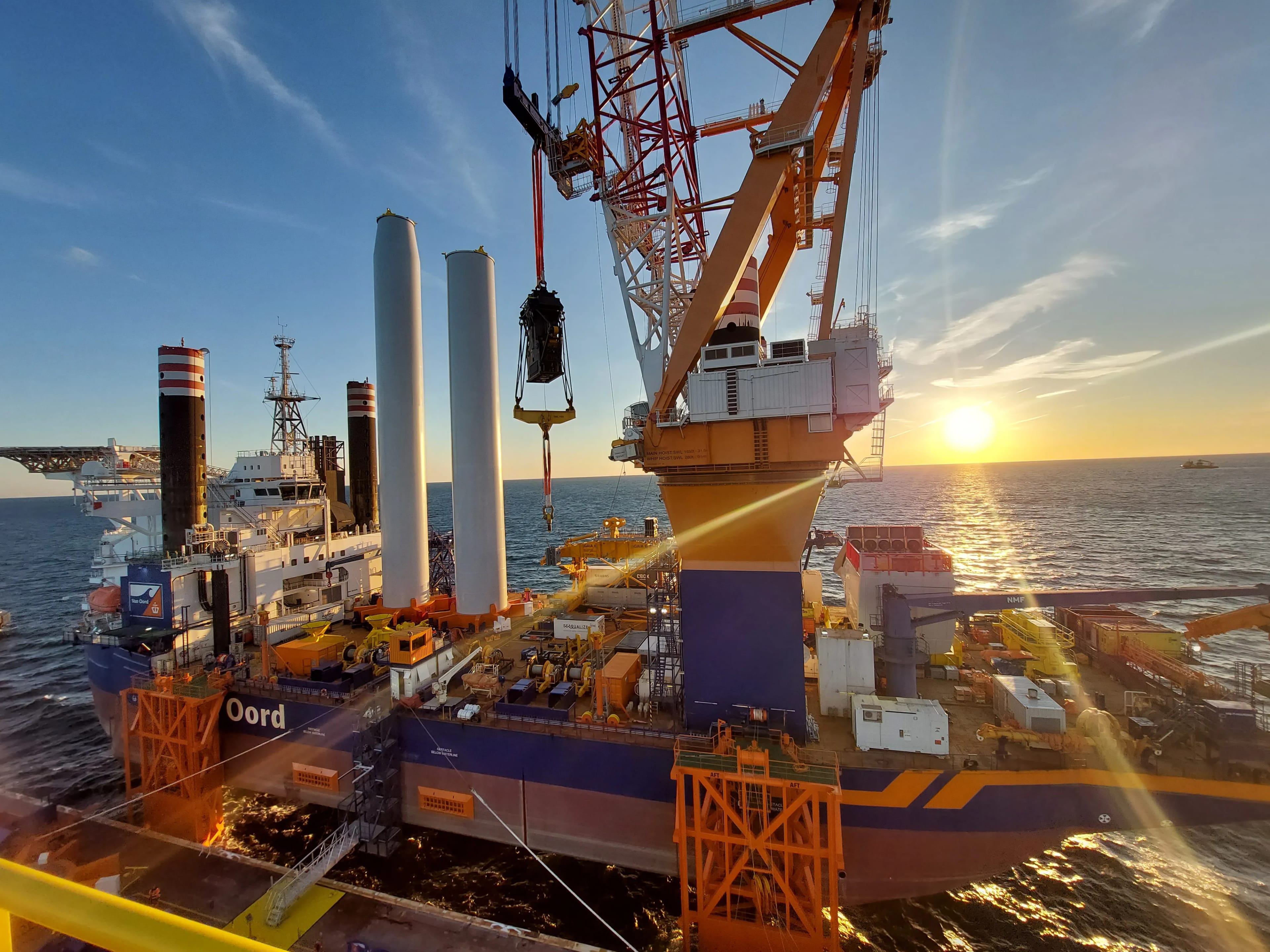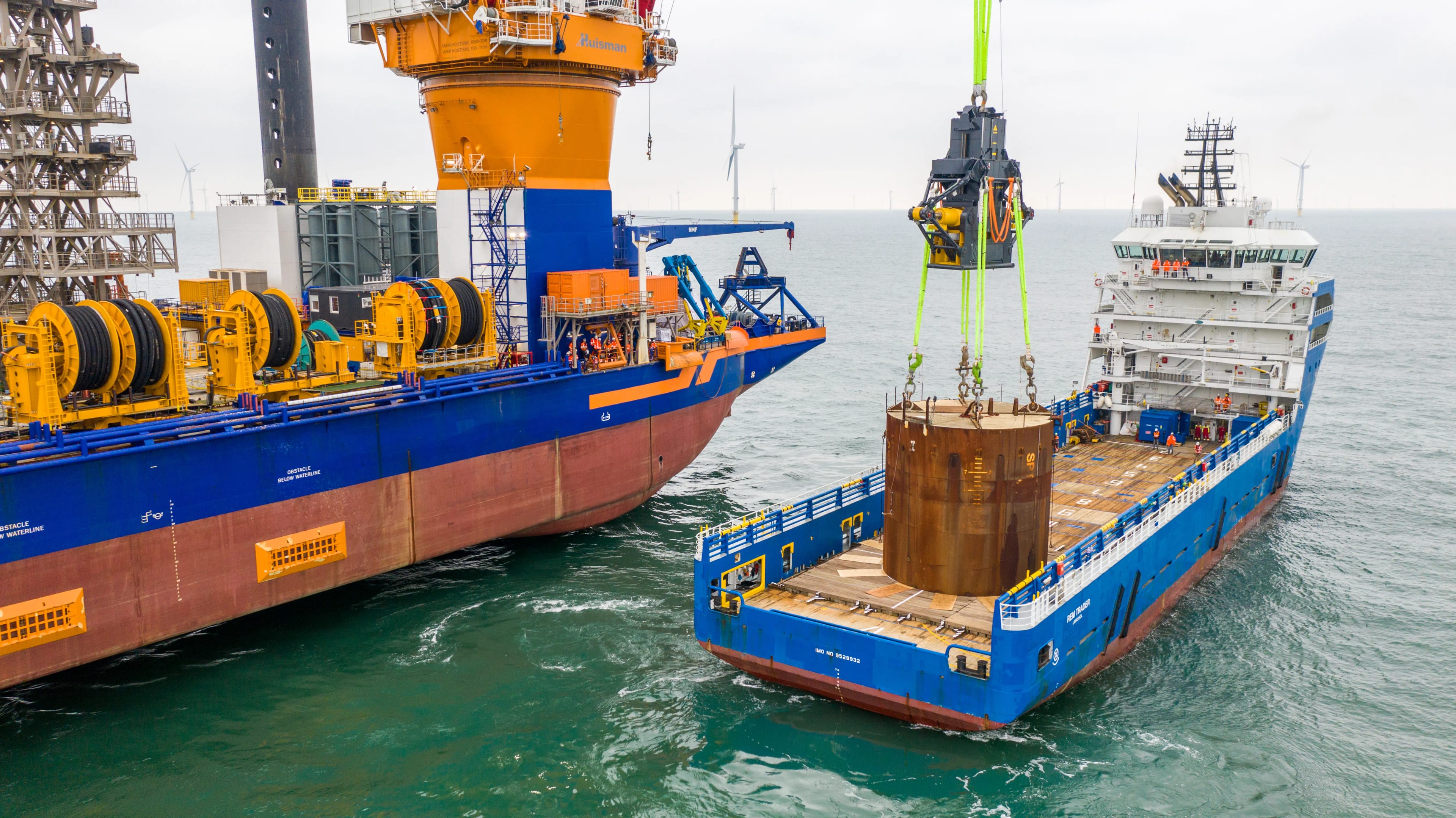Next Case
Full motion compensation
3D motion control. Keep your load still in three directions

Case
To be able to keep the installation vessel out at sea, a supply (feeder) barge brings wind turbine components offshore. The installation vessel crane needs to lift those components, sometimes weighing > 1.000mT, while the feeder barge moves up and down in the waves. How is that done, without damaging the crane, the delicate cargo or the crew?
Wind turbine installation vessels are usually 'Jack-Up' vessels: they can lower long legs, to position themselves sturdy on the seabed, for steady installation. But the supply vessel is not: this barge is heaving up and down, and moving left to right due to waves and wind. Normal cranes lift slow, causing the heaving deck to potentially rehit a delicate turbine component, the rigging can suddenly snatch and your crane can be subjected to dynamic shocks. Still, this lifting must be done hundreds of times over the course of several months. If the vessels and crew have to wait each time the weather is too adverse, the project budget will quickly blow up. That's when the Seaqualize Heave Chief can help: a sort of good weather insurance as you will, to make sure you lift safely and quickly, even when the weather is bad.

"Amazing tool! Blows me away every time I see it lift 1000t in that speed, it simply messes with my head" - Client Offshore Construction Manager
Since 2022, the Seaqualize Heave Chief has supported three differenct US East Coast Wind farms, helping install over 200 wind turbines, transferring > 200.000mT in total. Each turbine is brought offshore in 4 or 5 pieces, each quicklifted with a speed of up to 1 m/s from the heaving barges. The mechanics and software of the machine, ensures the dynamic shock loads (DAF) on the crane, always remains below 1.1, and can even be futher reduced to 1.05. The entire process is simplified and continuously monitored by our offshore operator, and can continuously work for at least 12 hrs on end, as they have their batteries on board. After the components are transferred to the installation vessel, several lifting frames are transferred back to the barge using our 'follow' mode, where we can safely follow the motions of the target to gently set everything down. All in all, a barge is emptied in ~10hrs and can be sent back to the harbor for the next cargo.


Next Case
3D motion control. Keep your load still in three directions
